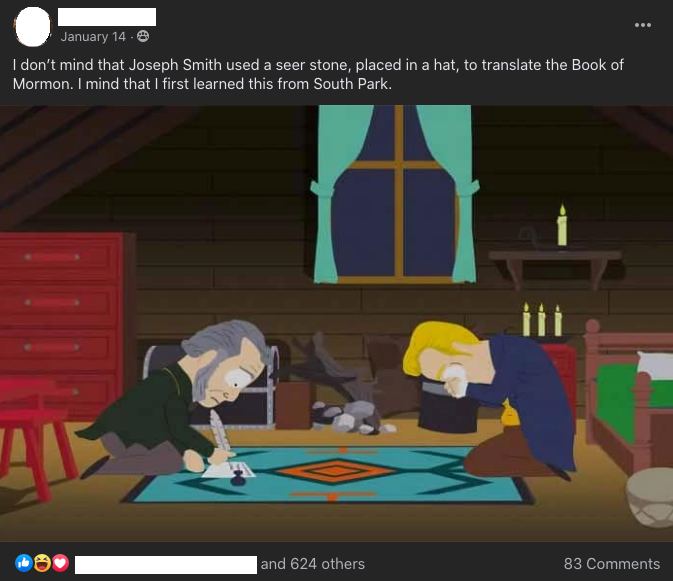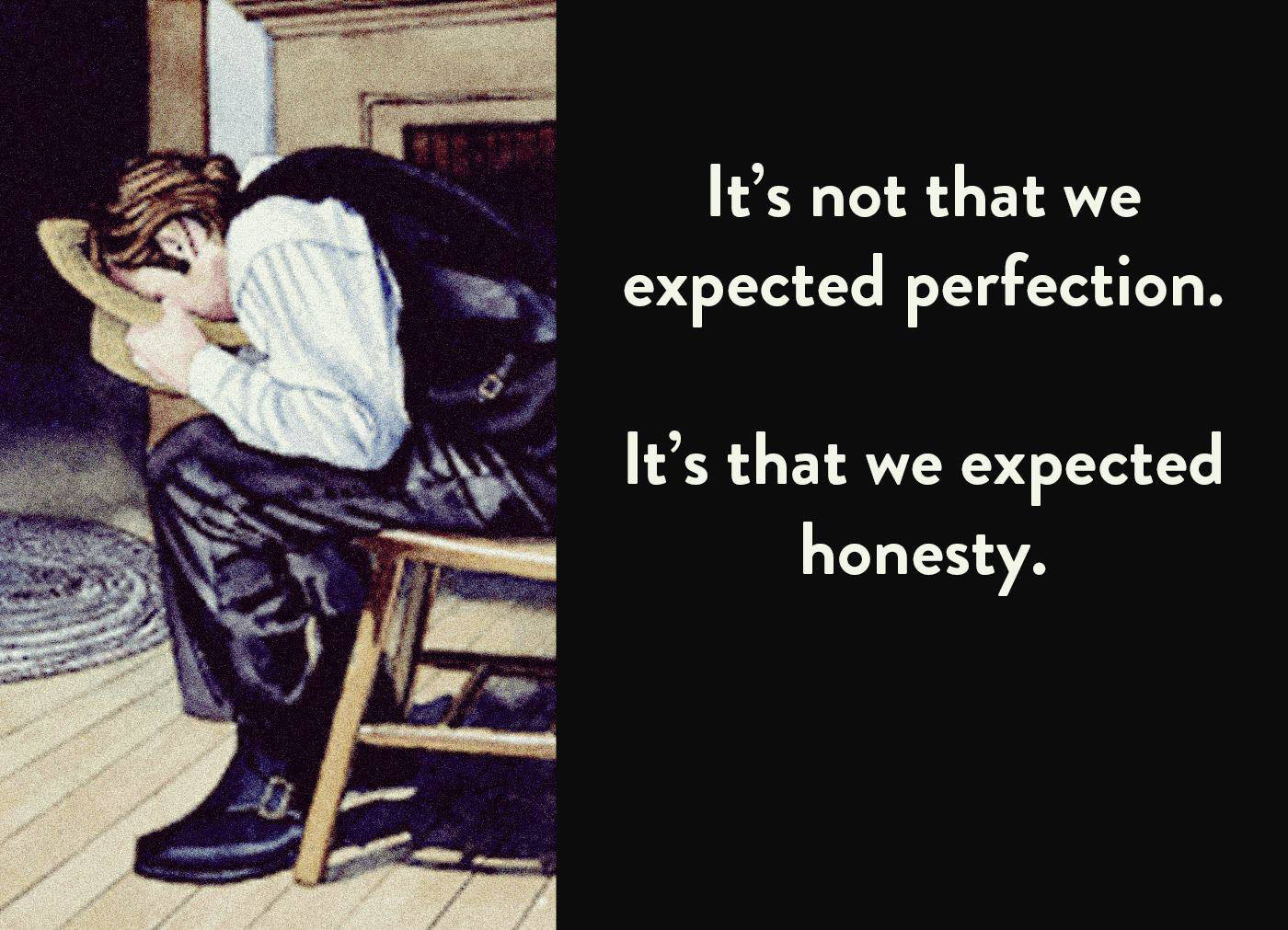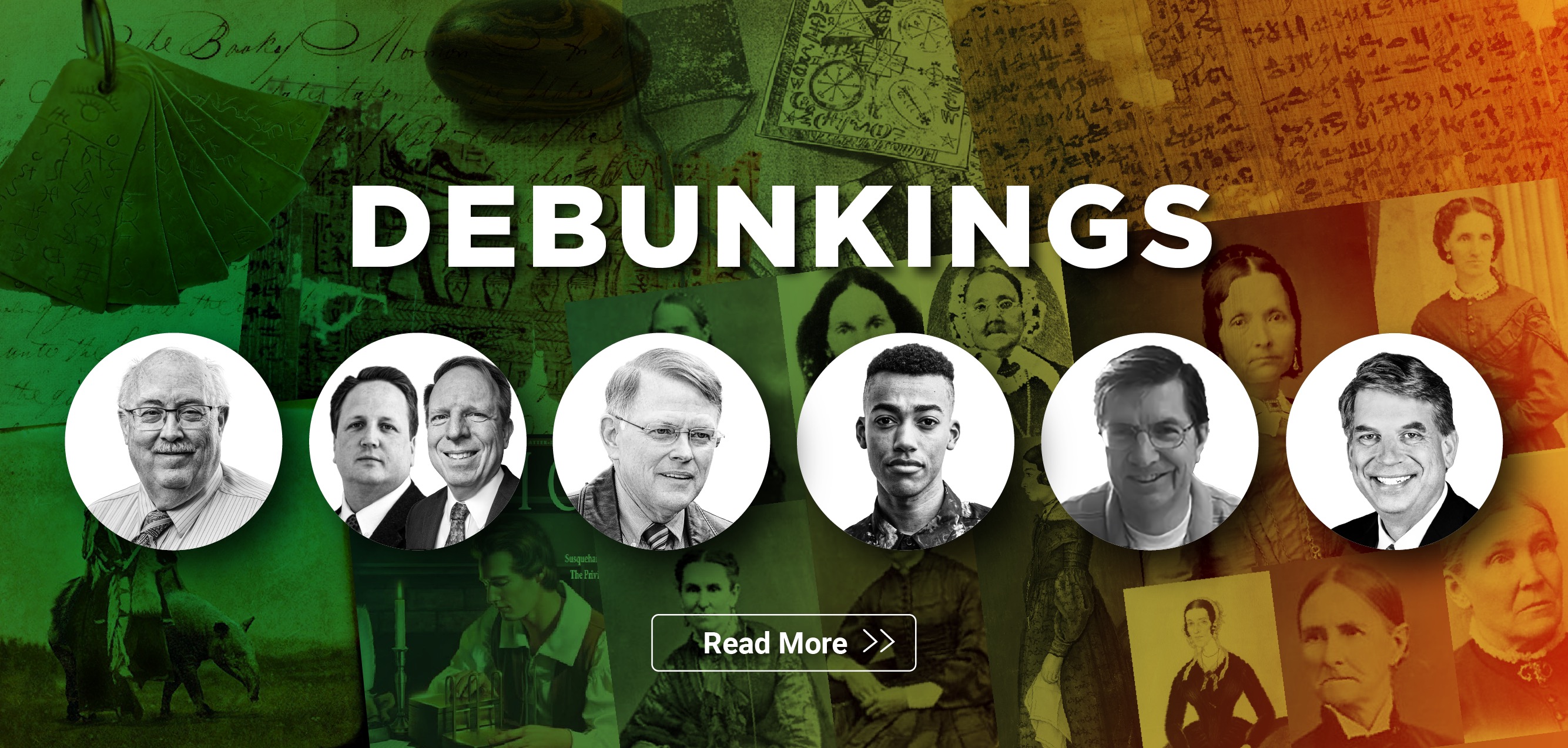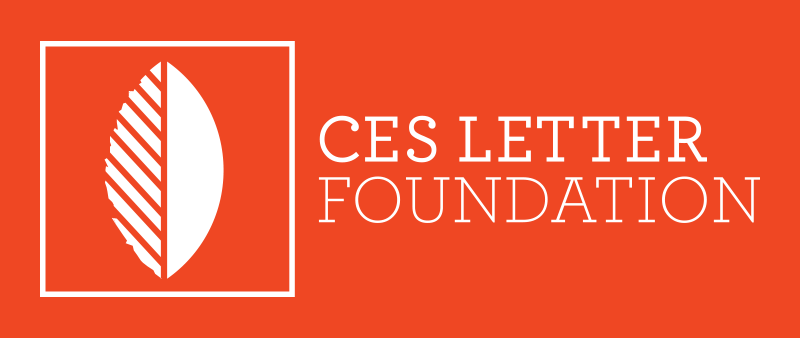Detailed Response
BoM Translation
Joseph Smith used a rock in a hat for translating the Book of Mormon
"'Unlike the story I’ve been taught in Sunday Schools, Priesthood, General Conferences, Seminary, EFY, Ensigns, Church history tour, Missionary Training Center, and BYU…Joseph Smith used a rock in a hat for translating the Book of Mormon.' The author adds that this is confirmed 'in an obscure 1992 talk given by Elder Russell M. Nelson."
Church Response:
Nevertheless, the scribes and others who observed the translation left numerous accounts that give insight into the process. Some accounts indicate that Joseph studied the characters on the plates. Most of the accounts speak of Joseph’s use of the Urim and Thummim (either the interpreters or the seer stone), and many accounts refer to his use of a single stone. According to these accounts, Joseph placed either the interpreters or the seer stone in a hat, pressed his face into the hat to block out extraneous light, and read aloud the English words that appeared on the instrument. The process as described brings to mind a passage from the Book of Mormon that speaks of God preparing “a stone, which shall shine forth in darkness unto light.
"Book of Mormon Translation," Gospel Topics on LDS.org, (2013)
Jeremy's Response
FairMormon is pointing to the Church's new essay that it published on December 30, 2013 confirming the rock in the hat.
A critical analysis of the Church's new Book of Mormon Translation essay can be found here.
Correct:
Actually, there is much more than one "obscure" talk in the Ensign by Elder Nelson that mentions this.
For a believer’s perspective on this subject, see: The Spectacles, the Stone, the Hat, and the Book: A Twenty-first Century Believer’s View of the Book of Mormon Translation.
FairMormon deleted their above response. See screenshot.
Jeremy's Response
FairMormon confirms that Joseph Smith used a rock in a hat for translating the Book of Mormon.
Elder Nelson’s talk is obscure. It was a 1992 talk given to new mission presidents in Provo, Utah that was reprinted in the July 1993 Ensign, which was twenty years ago when the “internet” wasn’t a household word and Hammer Pants were in style. This talk is difficult to find unless you know what to specifically search for on LDS.org (“rock in hat”, “seer stone”, etc.).
Let’s take a look at each one of the sources in the “Quotes to consider” section that FairMormon claims prove that the Church is being transparent and open to its members about Joseph’s “rock in a hat” Book of Mormon translation:
May 2014 Update: FairMormon removed most of the following sources from their Book of Mormon Translation page after the release of Debunking FairMormon's Debunking.
- He described the instrument as ‘spectacles’ and referred to it using an Old Testament term, Urim and Thummim
- He also sometimes applied the term to other stones he possessed, called ‘seer stones’ because they aided him in receiving revelations as a seer. The Prophet received some early revelations through the use of these seer stones.
- Records indicate that soon after the founding of the Church in 1830, the Prophet stopped using the seer stones as a regular means of receiving revelations. Instead, he dictated the revelations after inquiring of the Lord without employing an external instrument.
FairMormon deleted their above response. See screenshot.
Jeremy's Response
The Book of Mormon we have today was not translated with the Urim and Thummim. The Urim and Thummim was used to translate the 116 pages with Martin Harris. The Urim and Thummim was taken from Joseph Smith by the angel Moroni and Joseph instead used a rock he found digging in a neighbor’s backyard in 1822 to translate using a rock and a hat – without the gold plates. So, the above reference to the Urim and Thummim is irrelevant to the way the Book of Mormon that we have today was actually translated.
This source makes no mention of any hat, no mention of Joseph burying his face in a hat, nor does it make any mention of Joseph Smith using a seer stone to translate the Book of Mormon. If anything, this passage is misleading because the first paragraph implies that Joseph Smith used “spectacles” to translate the Book of Mormon, whereas the second paragraph states that Joseph Smith used “seer stones” for “early revelations.” This source also does not mention the rock in the hat replacing the gold plates for the Book of Mormon translation.
In sum, this is not good a source in educating members how the Book of Mormon was really translated.
2005 book Opening the Heavens:
In 2005, Opening the Heavens was published jointly by the Joseph Fielding Smith Institute for Latter-day Saint History and Deseret Book. As part of this book, at least twenty-nine references to the stone (often with the hat) are included, from both friendly and hostile sources:
p. 112, 129, 130, 135, 136, 137, 138, 142, 146, 148, 149, 150, 151, 152, 153, 154, 155, 156, 157, 158, 164, 166, 168, 178, 184, 185, 187, 192, 193, 196.
FairMormon deleted their above response. See screenshot.
Jeremy's Response
I had to Google this book. I have never heard of this book even as a believing member who voraciously read LDS books. I asked several of my educated believing and active LDS friends if they have heard of and/or read this book. They all stated that they haven’t.
This book was not officially approved by the Church. The Joseph Fielding Smith Institute (JFSI) for Church History was an academic research organization at BYU that was abolished in 2005. Like the Neal A. Maxwell Institute (FARMS) and BYU, JFSI could not and does not officially speak for and behalf of the Church. Ditto for Deseret Book.
This obscure book is not an official source and is not helpful in educating members about the correct Book of Mormon translation method.
“Martin Harris related of the seer stone: ‘Sentences would appear and were read by the Prophet and written by Martin”
FairMormon deleted their above response. See screenshot.
Jeremy's Response
Okay, Joseph read sentences off a seer stone. Where’s the hat? Where’s the seer stone in the hat? Where’s Joseph’s face in the hat? Where’s this rock in the hat replacing the gold plates for the Book of Mormon translation? Where’s the part that Joseph found this seer stone while digging a well in his neighbor Willard Chase’s property in 1822? A year before Moroni even appeared in Joseph’s bedroom?
This is not a clear source in educating members on how the Book of Mormon was actually translated.
David Whitmer wrote: “Joseph Smith would put the seer stone in a hat, and put his face in the hat, drawing it closely around his face to exclude the light.”
FairMormon deleted their above response. See screenshot.
Jeremy's Response
This is a good source. This explains how the seer stone was used. This is the Russell M. Nelson source that I used and talked about in the CES Letter.
Score #1 for the Church being transparent to its members in one talk in July 1993.
1998 book by Neal A. Maxwell, Not My Will, But Thine:
“light-shielding hat reportedly used by Joseph Smith during some of the translating of the Book of Mormon.”
FairMormon deleted their above response. See screenshot.
Jeremy's Response
The book’s disclaimer in the acknowledgements page states:
“This is not an official Church publication. Hence, even though I was helped with its preparation, I alone am responsible for the views it expresses."
This is not an official source. And even if it were, the reference to a “light-shielding hat” does not answer anything or provide a meaningful description of the translation process.
“The scriptures indicate that translation involved sight, power, transcription of the characters, the Urim and Thummim or a seerstone, study, and prayer.”
After returning from a trip to Palmyra to settle his afFairMormons, Martin began to transcribe. From April 12 to June 14, Joseph translated while Martin wrote, with only a curtain between them. On occasion they took breaks from the arduous task, sometimes going to the river and throwing stones. Once Martin found a rock closely resembling the seerstone Joseph sometimes used in place of the interpreters and substituted it without the Prophet’s knowledge. When the translation resumed, Joseph paused for a long time and then exclaimed, ‘Martin, what is the matter, all is as dark as Egypt.’ Martin then confessed that he wished to ‘stop the mouths of fools’ who told him that the Prophet memorized sentences and merely repeated them.”
FairMormon deleted their above response. See screenshot.
Jeremy's Response
Martin found a rock that looks like Joseph’s rock and made a switch to test. Joseph paused for a long time and says, “Martin, what is the matter, all is as dark as Egypt.” Okay? Where’s the hat? Where’s the rock in the hat? Where’s Joseph’s face in the hat? Where’s this rock in the hat replacing the gold plates for the Book of Mormon translation?
This is not a good source.
“There he gave his most detailed view of ‘the manner in which the Book of Mormon was translated’: ‘Joseph Smith would put the seer stone into a hat and put his face in the hat, drawing it closely around his face to exclude the light.”
FairMormon deleted their above response. See screenshot.
Jeremy's Response
This is a good source. It’s important to note that this is the same direct quote from the Book of Mormon witness, David Whitmer that Elder Nelson also quotes in his 1992 talk.
Score #2 for the Church being transparent to its members in September 1977 about how the Book of Mormon was really translated.
“To help him with the translation, Joseph found with the gold plates ‘a curious instrument which the ancients called Urim and Thummim, which consisted of two transparent stones set in a rim of a bow fastened to a breastplate.’ Joseph also used an egg-shaped, brown rock for translating called a seer stone.”
FairMormon deleted their above response. See screenshot.
Jeremy's Response
While this article also mentions a stone and that Joseph read sentences off the stone, it mentions nothing about a hat, the stone being placed in the hat, Joseph placing his face into the hat, and that the gold plates were not used in the translation process.
This is not a good source for clearly explaining how the Book of Mormon was really translated.
"What's Art Got To Do With It?"
FairMormon attempts to rationalize and justify the Church's Book of Mormon translation art work that does not match the historical record. See their response in red text below and my response.
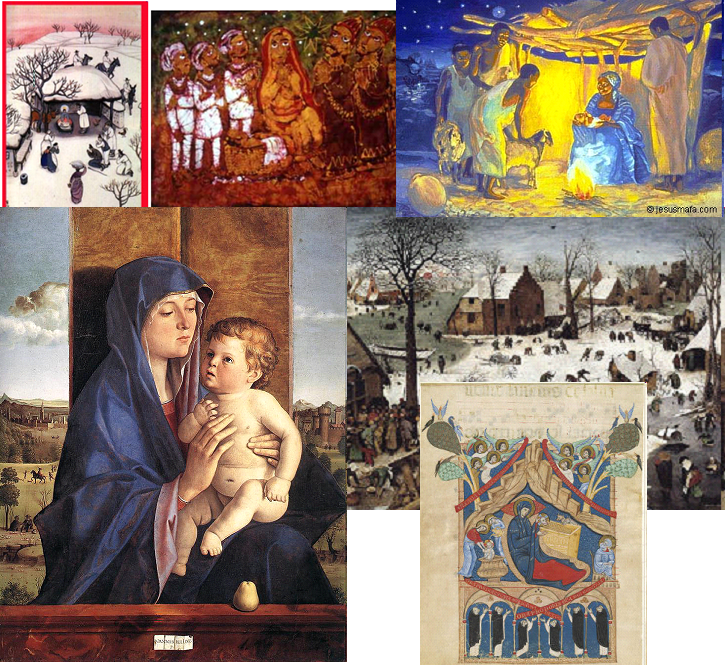
Jeremy's Response
FairMormon: “One of the strangest attacks on the Church of Jesus Christ of Latter-day Saints is an assault on the Church’s art.”
What’s strange about pointing out deception and fraud? Whether the fraud is carried out in text or art, it is still fraud.
I posted the following images on the bottom of this webpage but it’s worth posting it here to drive home the point that the Church not only has been deceptive to members in the past about how the Book of Mormon was really translated but they continue to deceive members still in by continuing to hang and insert paintings and art in the Conference Center, Church Museum, Temple Square, Temples, BYU campuses, and publications. They continue to do so while full well knowing that this is not how it happened.
The Church’s “honesty” and “transparency” on display:
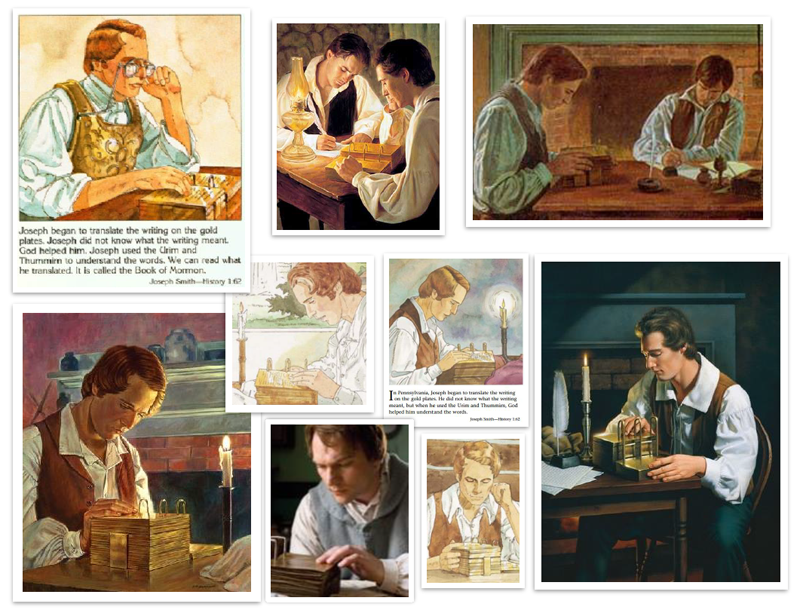
What really happened:

What an “honest in its dealings with its fellow men” Church looks like in a parallel universe:
FairMormon attempts to rationalize, justify, and defend the Church’s blatant deception and dishonesty on how the Book of Mormon was really translated by making the following bizarre claims:
- Sources! Sure, the art is wrong and misleading but the Church seriously isn’t hiding anything because they’ve talked about the rock in the hat in so-and-so talks and books.
- The silly artists got it all wrong.
- Religious art, that’s why. Look at all of these other non-LDS religious artists getting it all wrong too!
Sources:
This is actually pretty funny now since FairMormon removed from their webpage, after the release of Debunking FairMormon’s Debunking, most of the sources they claimed backed up their position that the Church is transparent and honest in how the Book of Mormon is translated. Sources that I clearly demonstrate were either unofficial, extremely obscure, or not clearly educating the member and investigator about the rock in the hat translation.
The Silly artists got it all wrong:
It’s never the Church’s fault. It is always someone else's fault. The artists. The members. The investigators.
The issue here is not whether the artists got it wrong. The issue here is that the Church has been wrong to display the misleading art for decades. The issue here is the Church's continued displaying - still in - the incorrect, inaccurate, and deceptive art in its Conference Center, Church History Museum, Temple Square, Missionary publications, and official publications.
It’s not like the art is new. This has been going on for decades. And the Church has known - for decades - that this is not how it happened.
FairMormon can try all they want to spin this and pin this on artists but this does not change the fact that the Church has continued to perpetuate - for decades - the falsehood and fraud of how the Book of Mormon was translated.
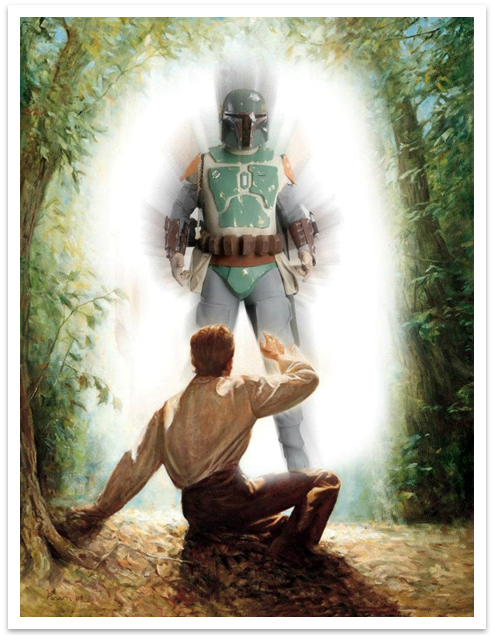
Imagine a Mormon artist who is also a believer of Jediism. He creates the above art and presents it to the Church. To the artist, it’s “religious art”. The Church prints it in the front cover of the Ensign and displays it in the Conference Center and Temple Square.
Critics bring up the obvious deception and problem: it does not match the historical record; it’s nonsense. Even worse, the Church knows it does not match the historical record and has known for decades. Yet the Church has displayed it for decades and continues to display it even though it’s nonsense and does not match the historical record.
In FairMormon universe and operating under FairMormon’s standard, the publication in the Ensign and the painting being put on display in the Church’s buildings? Artist’s fault.
Like I said elsewhere regarding the Book of Mormon translation dishonesty and deception: “To these apologists, it is always the fault of the member [artist] and never the Church.”
The point I’m driving home here is how ridiculous FairMormon’s “it’s the artist’s fault” claim really is. The artist can’t print in the Ensign. The artist doesn’t have the magical hammer and nail to hang his painting up in the Conference Center, Temple Square, or the Church History Museum. The artist doesn’t have the suit to print it in the Church’s materials.
The idea that Joseph Smith used gold plates for the Book of Mormon we have today and that he translated while putting his finger over the plates under the glow of a candle light is just as absurd, incorrect, and fictional as Boba Fett appearing to Joseph Smith. Both scenarios are fiction. They never happened.
Yet, in both scenarios, one thing remains the same: The Church knows both stories are fictional but they continue to display the one that doesn’t have Boba Fett in it.
“Non-LDS religious artists got it wrong too!”:
This reminds me of the Q&A session between FairMormon President Scott Gordon and John Dehlin (see video below). Scott tried to defend the Church’s racism by pointing to other Churches that likewise discriminated against blacks at the same time. In other words, it’s not so bad because others were doing it at the same time too!
The LDS Church doesn’t claim to be just another Church. It claims not only that it’s unique but that it operates under “divine authority” and “continuing modern revelation”. It doesn’t matter that the Baptists were racist in 1955. They don’t claim to have a living Prophet and 12 Apostles who speak directly to God.
It doesn’t matter if the “artists got it wrong”. The art was commissioned and approved many times spanning over a period of 40+ years over and over and over again. Prophets and Apostles have seen the art. They have approved the art in not only the Church’s buildings and Temples but in its materials as well. Elder Nelson knew about the rock and the hat as far back as 1993. Elder Maxwell knew at least since 1988 when he published his Not My Will, But Thine. They both knew that the Book of Mormon translation art that the Church was officially publishing and putting up on walls were a fraud.
Further, some of the non-LDS religious art that FairMormon uses to demonstrate their point that religious art is often inaccurate and incorrect misses the other point: they’re not being officially used by the “one true and only true Church” being led by God himself for official purposes to teach and convey a story and message to both members and investigators. It’s fraud. It’s a fraud because the Church knows it didn’t happen this way but they continue to display still in 2014 these deceptive images for millions of their members and investigators to see and assume that this is how it happened.
FairMormon: "Elder Neal A. Maxwell went so far as to use Joseph's hat as a parable; this is hardly the act of someone trying to "hide the truth":
Jacob censured the "stiffnecked" Jews for "looking beyond the mark" (Jacob 4:14). We are looking beyond the mark today, for example, if we are more interested in the physical dimensions of the cross than in what Jesus achieved thereon; or when we neglect Alma's words on faith because we are too fascinated by the light-shielding hat reportedly used by Joseph Smith during some of the translating of the Book of Mormon. To neglect substance while focusing on process is another form of unsubmissively looking beyond the mark.[15]
Those who criticize the Church based on its artwork should perhaps take Elder Maxwell's caution to heart."
I’m sorry, but when you’re making a claim to an investigator, who is trying to decide on whether or not to spend his life as a 10% tithing paying Mormon, that the Book of Mormon was translated this way while displaying the deceptive art? When the Church knows that this isn’t how it happened and isn’t doing anything to correct this by removing the art and replacing it with correct art? It’s fraud. All this “parable” and “looking beyond the mark” and “it’s religious art” stuff is irrelevant nonsense when fraud and deception is being used as a primary means in converting both members and investigators alike to a fictional story.
Showing the true art and story matters. If an investigator or member were to learn that Joseph Smith looked into his hat with a common rock he found in his neighbor’s backyard to “translate” the Book of Mormon? The same rock he used as a treasure hunter conning his neighbors out of their money? It could be a critical factor in their decision process in whether or not to continue in Mormonism. The Church knows this and this is why they’ve obscured this fact for decades and this is why they’re continuing to obscure it. They’d much rather perpetuate a false account than show the true bizarre account in fear of the repercussions.
FairMormon: "The hat detail causes problems for the critical theory that Joseph cheated with notes while dictating. With a curtain in place, it is much easier to postulate that Joseph used notes or a Bible in the translation process. With the stone and the hat, however, witnesses were able to view the entire process, thus highlighting the total lack of notes or Bible in the translation process. Note also that in Parson's painting, with it's open setting, the cheat-notes theory can't get any traction.”
In FairMormon’s response in the Book of Mormon section, they concede that Joseph Smith may very well have consulted the King James Version text to explain why there are 1769 KJV errors and italics in the supposedly ancient Book of Mormon text.
Now, FairMormon flip flops and throws this position out by stating that Joseph couldn’t have “cheated” by using notes or a Bible.
FairMormon: “One needs to consider the impressive witness testimonies of the plates' reality…”
One needs to consider the unimpressive witness testimonies in light of all of the problems, inconsistencies, “second sight”, and magical worldviews of the witnesses. Details can be found here.
